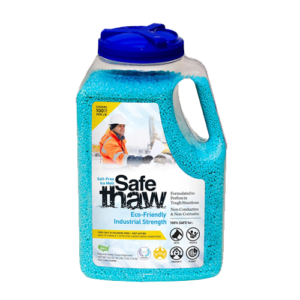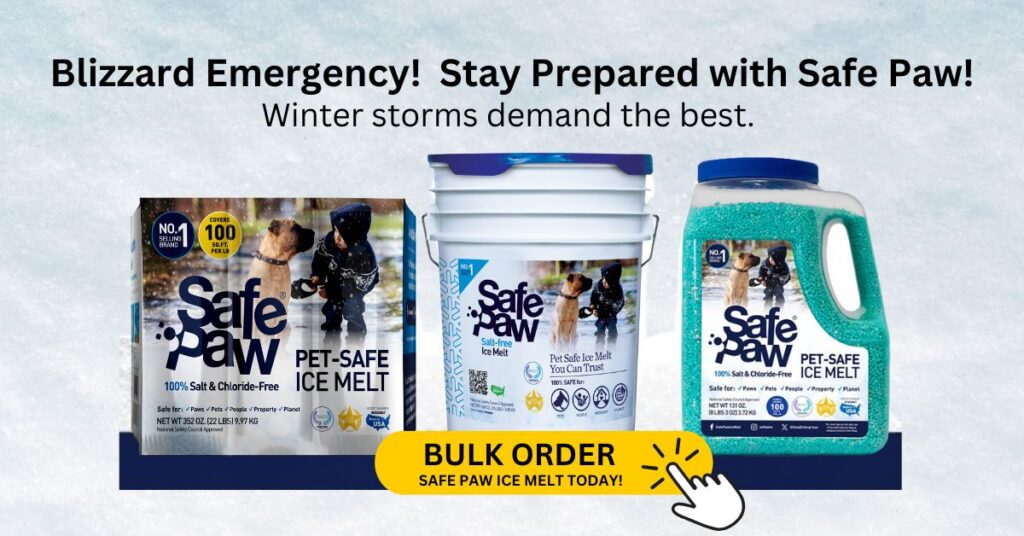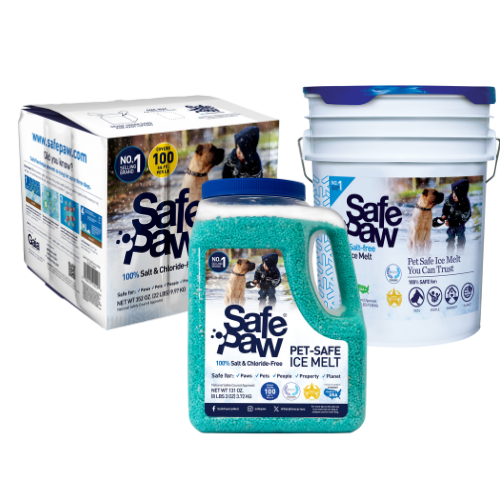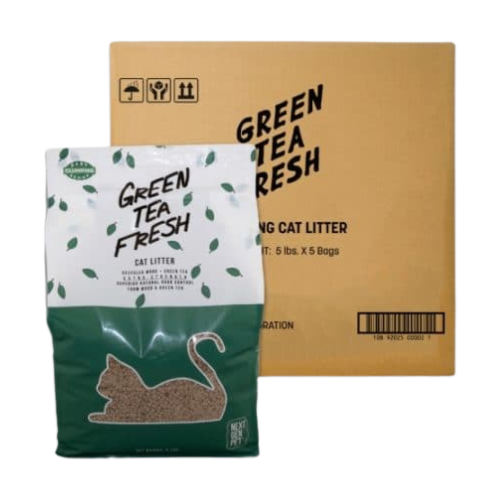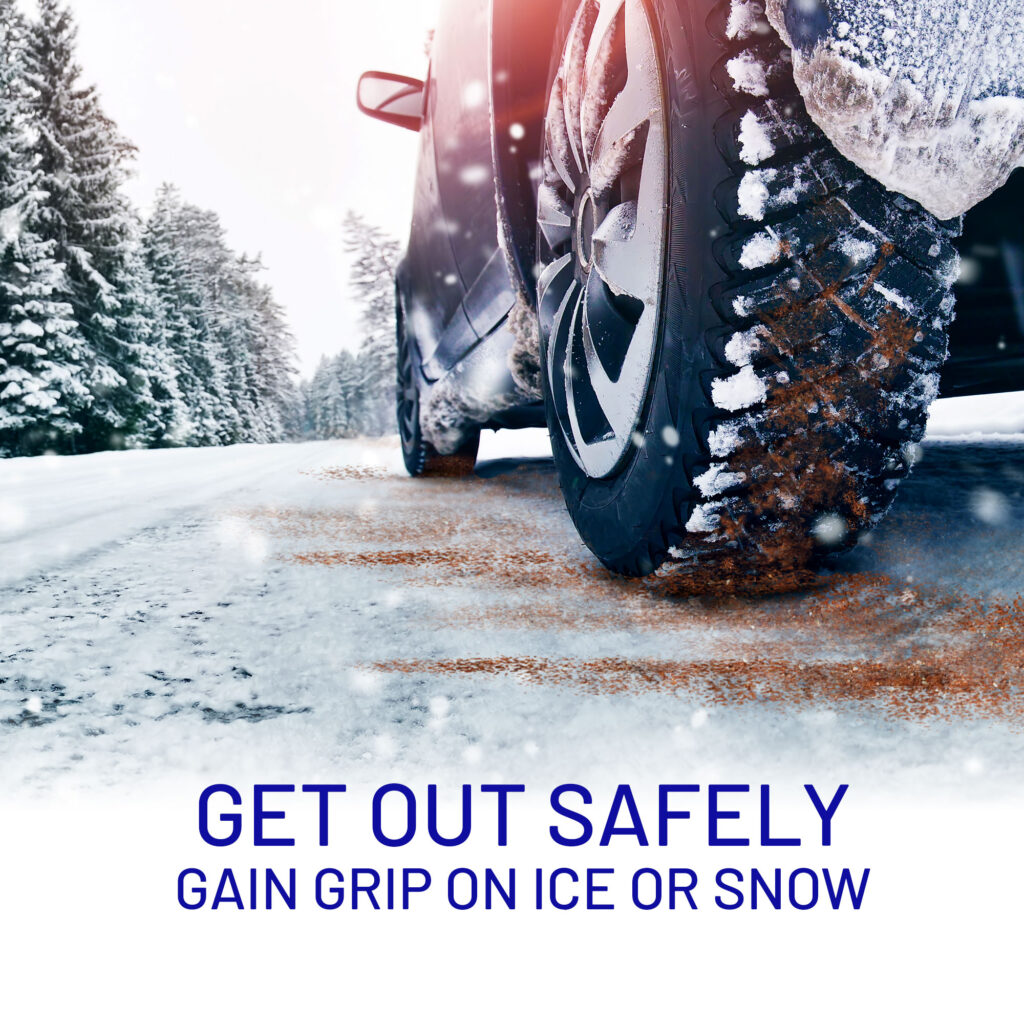5 Effects Of Calcium Chloride On Surfaces And Skin

When it comes to dealing with icy conditions, calcium chloride often stands out as one of the preferred de-icing agents. As a hygroscopic compound, it readily attracts moisture, making it efficient in melting ice. However, have you ever paused to ask, “Is calcium chloride safe?”
1. Impact on Different Surfaces
Is calcium chloride safe? Calcium chloride, when used excessively, can have detrimental effects on various surfaces. Concrete driveways, in particular, are prone to damage. The chemical reaction between calcium chloride and the calcium hydroxide present in concrete can lead to the formation of calcium oxychloride. This compound expands upon formation, leading to scaling and flaking of the concrete surface. If you’re weighing the “concrete vs asphalt driveway cost”, consider the potential long-term damage and additional repair costs due to such reactions.
Eco Friendly Ice Melt
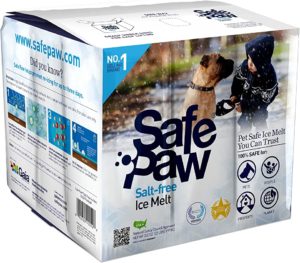
Pet Friendly Ice Melt – Safe Paw!
The Original and the #1 Child and Pet Safe Ice Melt for over 20 years. Guaranteed environmentally safe – will not harm waterways and sensitive wetlands.
2. Corrosive Nature
Metals are not spared from the effects of calcium chloride. Its corrosive nature means that prolonged exposure to metals such as steel can lead to rusting. This is especially concerning for vehicles that frequently traverse roads treated with calcium chloride. The undercarriage of cars, if not regularly cleaned, can suffer accelerated rusting, compromising the vehicle’s structural integrity.
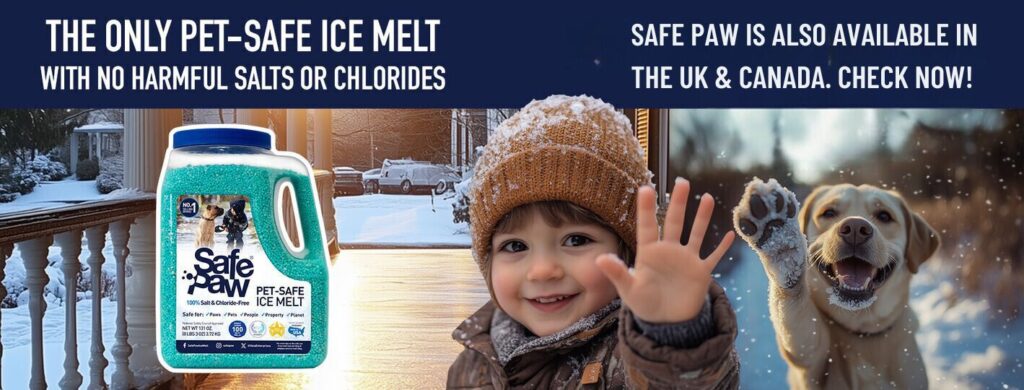
3. Skin Irritation
While calcium chloride is not inherently toxic, it can be an irritant. Direct skin contact, especially in its concentrated form, can result in dryness, redness, and itching. In more severe cases, it might cause burns. It’s always recommended to use gloves when handling this substance and to wash any skin that comes into contact with it thoroughly.
Pet Safe Ice Melt – Safe Paw
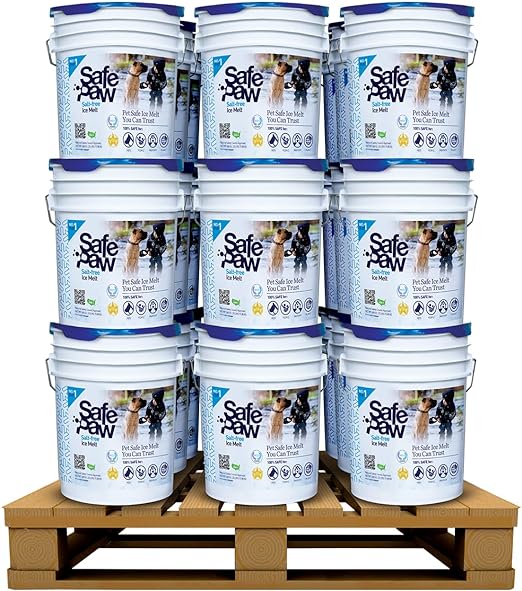
Safe Paw, Child Plant Dog Paw & Pet Safe Ice Melt -35lb, 36 Pails

Safe Paw, Child Plant Dog Paw & Pet Safe Ice Melt -22lb, 100Bboxes
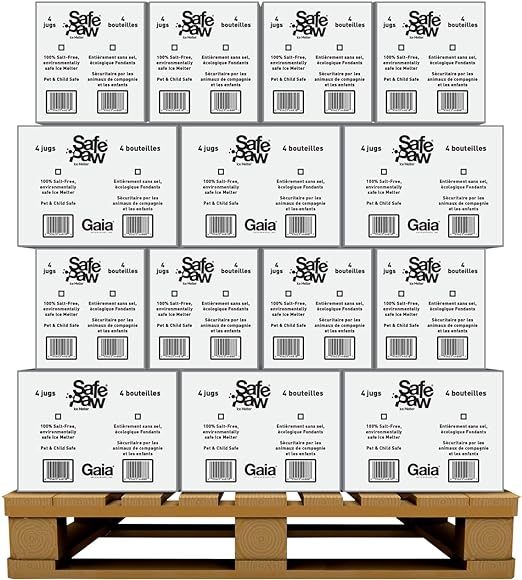
Safe Paw, Child Plant Dog Paw Pet Safe Ice Melt, 160 Jugs
Pet Products Powered By EzPz.pet
4. Environmental Concerns
While calcium chloride is efficient in melting ice, its runoff can pose challenges. High concentrations of this compound in water bodies can harm aquatic life. Furthermore, as it makes its way into the soil, it can alter its structure, potentially affecting plant growth.
5. Inhalation Risks
Breathing in calcium chloride dust or its aerosol can irritate the respiratory tract. Symptoms might include coughing, shortness of breath, and sore throat. This is especially concerning for workers who handle the substance regularly without proper protection.
Salt: A Not-so-safe Alternative
One might think that resorting to the traditional method of using salt might mitigate these problems. However, salt comes with its set of issues. For one, it’s corrosive, similar to calcium chloride, posing threats to metal surfaces. Salt can also be harmful to vegetation, and its residues can find their way into water sources, affecting aquatic life. And for pet owners, there’s the constant worry of “can dogs have salt?” as it’s harmful when ingested in large amounts.
Gaia Enterprises Inc. delivers 100% pet-safe and environmentally friendly winter products. Safe Paw, our flagship product, is the #1 selling pet-safe ice melt that does not harm pets, safe if ingested, and safe on all types of concrete.
A Safer Alternative: Safe Paw
Given the concerns associated with calcium chloride and salt, homeowners and municipalities alike are on the lookout for safer alternatives. Enter Safe Paw, a granular ice melt that promises safety not just for surfaces, but also for pets and children.
Its non-corrosive and non-conductive formula ensures that your surfaces, whether cured concrete or metals, remain unharmed. Unlike other deicers, Safe Paw is completely free from salt, chlorine, and acetates. This ensures that your environment, especially the soil and water sources, remain uncontaminated.
But the real highlight of Safe Paw is its pet and child safety. Even if ingested, it won’t harm them. With a concentrated formula, you only need to use half of what you’d typically use with traditional salt, and its effects last up to 72 hours on the surface. For immediate use on walkways, it comes in an easy-to-use consumer jug, ensuring that your paths remain ice-free and safe.
When it comes to calcium chloride, its widespread use as a deicer prompts a closer look at its safety implications for humans, pets, and the environment. Here’s what you should know about the risks associated with this potent chemical compound:
Calcium Chloride Risks for Humans
Calcium chloride can pose significant health risks if not handled properly. Contact with skin or eyes can cause irritation or, in severe cases, chemical burns. When inhaled, the dust can irritate the respiratory tract, leading to coughing and shortness of breath. Therefore, it’s crucial to use personal protective equipment when handling calcium chloride to prevent direct contact and inhalation.
Calcium Chloride and Pet Safety
For our furry friends, calcium chloride can be especially dangerous. If pets walk over areas where calcium chloride has been applied, it can stick to their paws. If not cleaned off, it can cause dryness, irritation, and even painful burns. More alarmingly, if pets lick their paws and ingest this chemical, it can lead to serious gastrointestinal issues. As a responsible pet owner, consider using pet-safe ice melt products or thoroughly cleaning your pet’s paws after walks in treated areas.
Environmental Impact of Calcium Chloride
The environmental impact of calcium chloride is also significant. Its use can lead to increased chloride levels in local waterways, which can be toxic to aquatic life and disrupt ecosystems. Additionally, runoff containing calcium chloride can lead to soil salinity increases which might inhibit plant growth and harm sensitive vegetation.
Given these risks, it’s clear that while calcium chloride is an effective deicing agent, its use needs to be carefully managed. Limiting application to necessary areas, exploring safer alternatives, and adhering to recommended usage guidelines can help mitigate the potential negative effects on humans, pets, and the environment. When possible, consider using less harmful deicing agents or combining them with traditional methods like shoveling to reduce the need for chemical deicers.
Wrapping Up
So, is calcium chloride safe? When choosing a de-icing agent, it’s essential to weigh the benefits against the potential harm. While calcium chloride stands out in terms of efficiency, its impacts on surfaces, the environment, and health cannot be ignored. By opting for alternatives like Safe Paw, you ensure safety for all – from your driveway to your dearest pets.
Stay safe and confident this winter with Traction Magic!
This innovative, 100% natural product offers instant traction on any icy surface. Whether you’re navigating your sidewalk, steps, or driveway, Traction Magic helps you stay upright and prevents falls.
Try Our Other Winter Safety Products
Walk On Ice
Prevent slips at home, work or on the go, The handy disposable canister can be taken everywhere, with the same 100% naturally occurring minerals that provide instant traction on ice or snow.
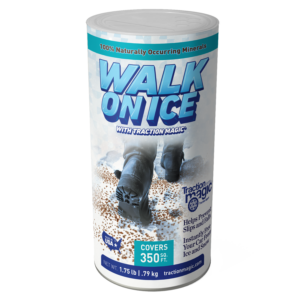
Traction Magic
Stay safe on slippery surfaces with a product that’s 100% natural and safe for pets, people, and your property. Use Traction Magic on sidewalks, steps, or as instant traction for your car.

Walk On Ice
Prevent slips at home, work or on the go, The handy disposable canister can be taken everywhere, with the same 100% naturally occurring minerals that provide instant traction on ice or snow.

Safe Thaw
Imagine an ice melt you can put down and never worry about. It won’t harm pets, kids and your property. That’s Safe Thaw. Unlike anything else on the market, Safe Thaw can change how winter affects our planet.
